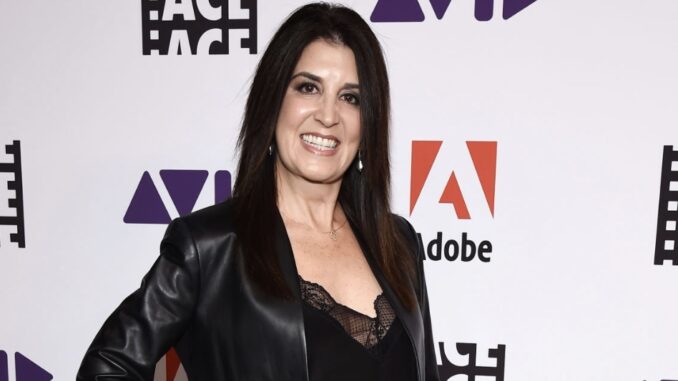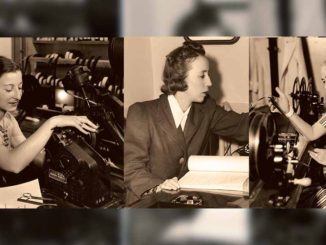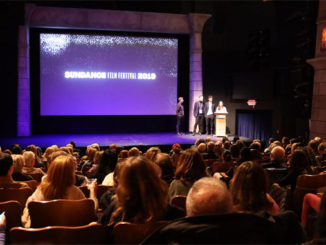
By Peter Tonguette
Like every other town across America, Hollywood was a different place in early March. Movies and television shows were still being shot, and editors were still being hired to cut them. Multiplexes were open for business as usual, and no one could anticipate that the summer movie season would be anything but a smash.
Just ask picture editor Dana E. Glauberman, ACE, who, along with Nathan Orloff, was in the throes of cutting the new “Ghostbusters” sequel, director Jason Reitman’s much-anticipated “Ghostbusters: Afterlife.” On the heels of a series of much-viewed trailers, Sony Pictures Releasing planned to release the film on July 10. “We were just in the middle of director’s cut,” Glauberman said.
Then came COVID-19. Along with most other summer movies, “Ghostbusters: Afterlife” was given a new release date (the film is currently set to drop next March). Meanwhile, Glauberman, Orloff, a visual effects editor and team, and three assistants had a heap of work yet to do.
“The studio was able to get us all working from home,” Glauberman said.
Glauberman can be considered one of the lucky ones, pre- and post-pandemic: She has agency representation. The editor is one of many postproduction professionals represented by the WME agency, which—as among the top agencies in Hollywood, including for below-the-line talent—has endeavored to keep its clients working during an unprecedented time.
Clients have benefitted with everything from practical advice to job leads to hand-holding. When the coronavirus hit, WME went into scramble mode to assure that those clients who could keep working did just that. Although some editors were laid off immediately, roughly half of WME’s editorial clients assigned to features continued to work.
“When the shutdown happened, we called all of our clients and talked to them and said: ‘We’re in uncharted territory,’” said Wayne Fitterman, the head of the production department at WME and a WME Partner. “For the most part, everyone was very understanding. We were also very pleasantly surprised at how many editors did get to work from home and continue working. I even had a couple that got to continue to work in the office—one up until just recently, in fact.”
Glauberman, who is represented by WME Partner Jasan Pagni, said that the support the agency has given her goes beyond mere logistics. “He’s been there to listen to me complain, listen to me rave, listen to my excitement—all across the board,” Glauberman said. “We’ve talked about what’s going to happen during this process; we’ve talked about what’s going to happen after this process.”
WME of course isn’t the only agency in the game. Also prominent in below-the-line representation is the Gersh Agency, ICM, and UTA.
For WME, technological innovation is the key that allowed some of its clients to carry on with their jobs remotely. WME agent Mira Yong points to picture editor Julia Bloch, who was more than halfway through cutting Episode 5 of Apple TV’s upcoming series “Mosquito Coast” when the shutdowns began.

“The postproduction team that they had was spectacular. . . . She did not have a system at her apartment—she lives in a studio in Brooklyn,” Yong said. “They brought the system to her in a safe manner. The post producers did a tutorial on how to use the different systems,” which included Evercast and PIX. “Technology, obviously, has very much helped,” Yong said. “They did extend post a bit longer than they would have in order to have more time to have the discussions with the director on that episode.”
Ironically, before the pandemic rocked the movie business, a high percentage of WME postproductions clients had been working. “Features were strong,” Pagni said. “Of course, there are more TV and streaming projects, but I would say overall the business was doing very well prior to the shutdown.”
Now, the WME agency finds itself less occupied with the usual business of carefully building careers than simply keeping its clients employed. “This year is more about actually making sure that you can survive and get to next year,” Yong said. “Then we can talk much more about what the projects are and also keep introducing them to the filmmakers that they want to talk to and the sort of projects that they want.”
Of course, all Guild members are asking themselves: What will next year (or later this year) look like? The agency is in constant communication with studios to find out what new work will be available to its postproduction clients, and when. “We sit in a position of knowing what’s happening at every studio and every network—it is our job to do so,” Yong said. “It’s not something that’s just given to us. We do have to go out and search for that and have these conversations.”
Pagni said that he expects that early opportunities might emerge on projects that had been midway through shooting when the shutdown took place.
“It’s possible that those projects could need to add additional editors to make a certain schedule, because everything got thrown off a little by the shutdown,” Pagni said. “I do think that TV and streaming is going to get pretty busy pretty quickly because they’ve been sort of burning off their product during the shutdown, releasing all of the new shows. Features might not be quite as quick because of the later release dates.” At the same time, the agency is aware of studios starting to look at “earlier hires,” like production designers, which allows them to start lobbying for editors.
At the same time, the workplace that editors enter will not be the same as the one they left back in March. The WME agency has been communicating with both filmmakers and studios to better understand COVID-era protocols and communicate that information to their clients. “You used to really feel like you needed to in-person interview to get the job,” Yong said. “Now we are at that point where this is something that people understand we’re able to communicate better over this technology.”
Fitterman said that editors are uniquely positioned to get back to work more quickly than other below-the-line talent. “Everyone else has got to be on the set, separating themselves from other departments and staggering the workflow,” Fitterman said. “The inherent nature of working in a cutting room is more easily adaptable to a post-COVID environment.”
The WME agents say that the time away from studio gates has been well spent, as they’ve both nurtured and deepened their relationships with their clients from the post-production community. For example, the agency sent out a questionnaire to their clients asking questions that don’t ordinarily come up in day-to-day business, like: What did you want to be when you grew up? or What is your idea of perfect happiness?
“What we found with doing that is that we can take more of the 360 [degree view] of the person,” Yong said. “The best way to represent an editor is to really understand who they are and these little quirks of what interests them.” The results, she added, will pay off when editors start thinking about what projects they want to cut post-COVID. Added Yong: “We spent doing that in order to really make this time be fruitful later.”
For his part, Fitterman is optimistic about a resurgence of production (and postproduction) activity. “When they’re anticipating a labor strike, you get what we used to call a pre-strike ramp-up,” Fitterman said. “We’re hoping for a post-COVID ramp-up.”






